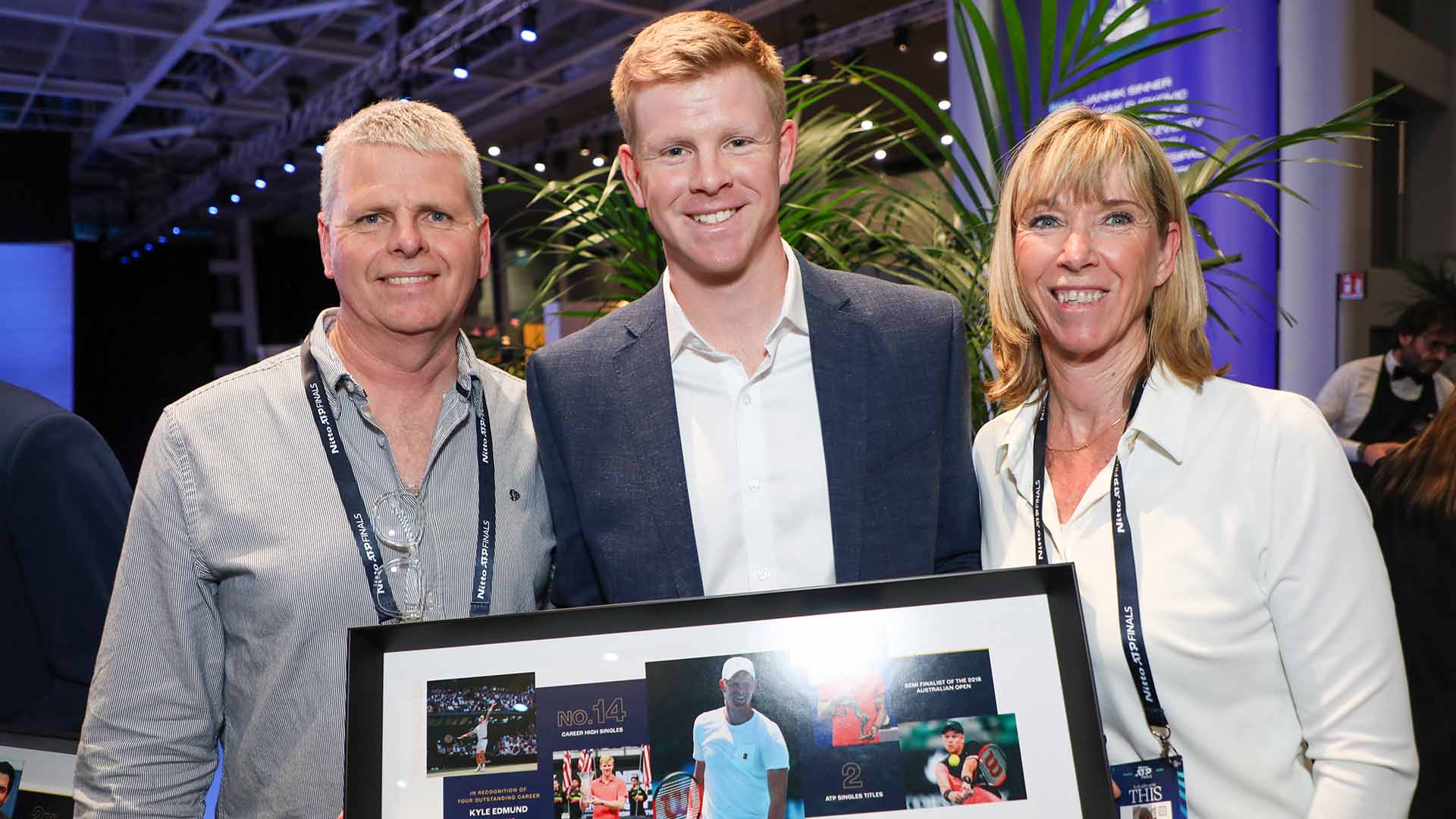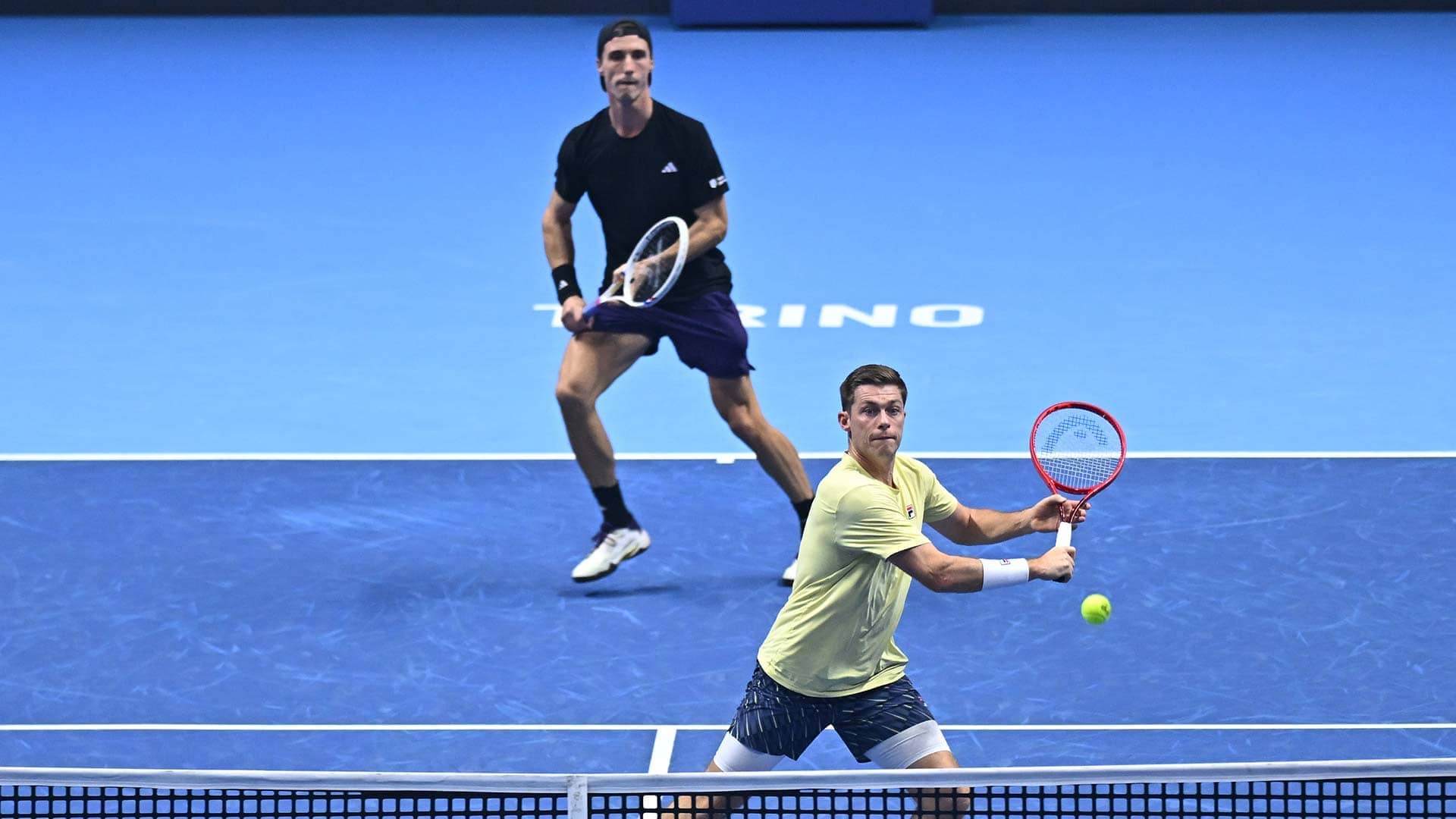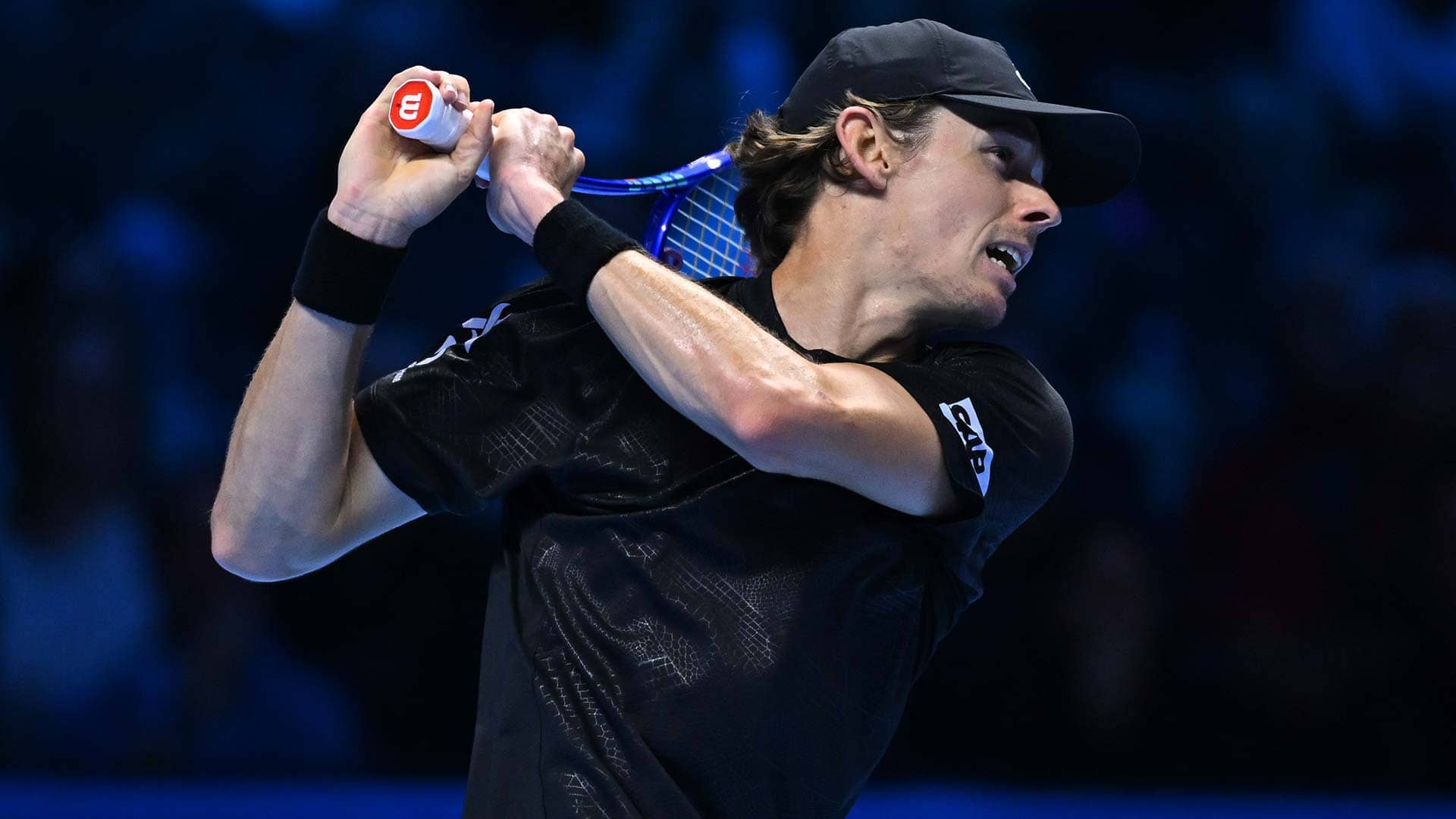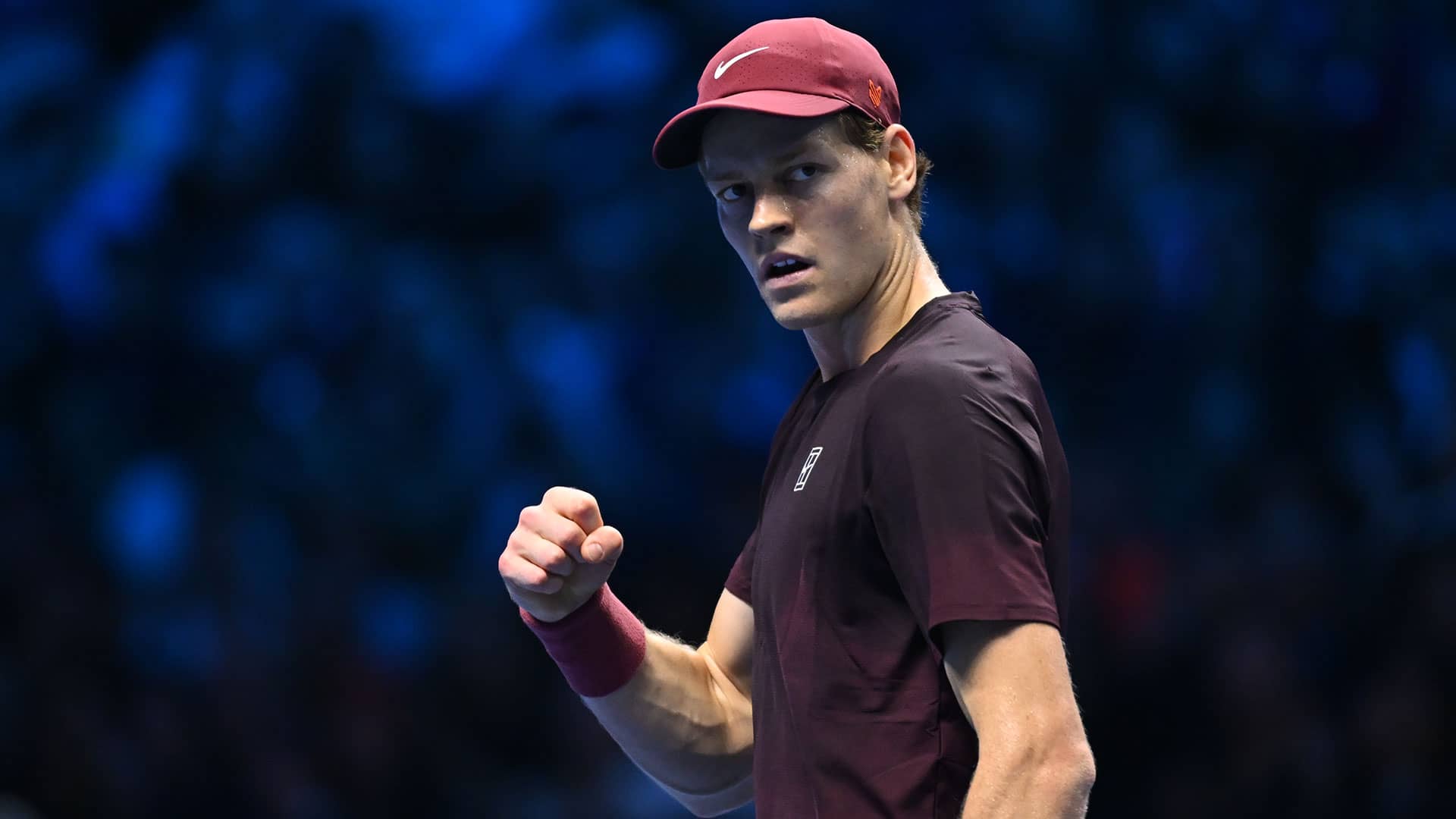Edmund savors enduring sparks from a battered career
In Turin's glow, the British powerhouse who once whipped forehands like thunder now sifts through 13 years of highs and hurts, turning retirement's shadow into a lens of lasting light.

In the shadowed elegance of Turin's Pala Alpitour, where the Nitto ATP Finals pulse with end-of-year intensity, Kyle Edmund stood amid a ceremony saluting eight retired warriors of the tour. The 30-year-old Yorkshireman, whose journey peaked at No. 14 in the PIF ATP Rankings, had stepped away in August after surgeries in 2020, 2021, and 2022 eroded his edge. Three months later, surrounded by the event's electric hum and appreciative applause, he reframed the close of his 13-year professional run not as defeat, but as a canvas for cherished recalls.
“You definitely look back with more positivity [with time],” he told ATPTour.com in Turin, where he and seven other recently retired ATP Tour stars were honoured in a special ceremony on Friday night at the Nitto ATP Finals. “For me, when I was ending [my career], it was a bit of a negative because something is coming to an end that you are so passionate about and so invested in. But you can look back and enjoy those things.”
Davis Cup ignites national fire
Edmund turned pro in 2012, the year Andy Murray ended Great Britain’s 76-year wait for a men’s singles major champion at the US Open. Within three years, the 20-year-old broke into the Top 100 and debuted in the Davis Cup final against Belgium, helping secure the nation's first title in 79 years on indoor clay. That Ghent showdown demanded quick shifts from hard-court habits, with Edmund probing with crosscourt backhands to set up inside-out forehands, the team's rhythm under packed stands forging a bond that outshone solo pressures.
The psychological surge from that victory lingered through grueling seasons, a mental anchor amid the tour's isolation. His raw power, channeled into one–two patterns that alternated flat serves with dipping topspin, kept opponents off-balance on the slower surface, turning national expectation into shared triumph. Those ties, blending Murray's precision with his own building aggression, taught the value of collective resolve, a lesson that echoed in quieter moments of doubt.
Forehand surges to Melbourne semis
Renowned for a forehand that fused explosive force with vicious topspin, Edmund claimed ATP 250 titles in Antwerp in 2018 and New York in 2020, his game adapting to hard courts' pace with wide-angled crosscourt drives that stretched rallies. In Antwerp, he navigated Gael Monfils by mixing underspin slices to disrupt footing, then unleashing low-skidding forehands in quick combinations, the Belgian indoor buzz amplifying each point's edge. That triumph, emotional after years of near-misses, boosted his belief in tactical tweaks like eastern grips for sharper dips.
His standout major push came at the 2018 Australian Open, where Melbourne's heat favored baseline grinders. He toppled then-World No. 12 Kevin Anderson in a fourth-round endurance test, redirecting heavy serves with inside-in returns to force errors in prolonged exchanges. The quarterfinals pitted him against No. 3 Grigor Dimitrov, whom he dismantled 6-3, 6-3, 6-4 by staying aggressive, using down-the-line forehands to exploit backhand weaknesses and control tempo under Rod Laver Arena's glare.
Falling to Marin Cilic in the semis capped a run that spotlighted his weapon's bite on fast hard courts, where consistent bounce let him load spins without overreaching. The crowd's roar during those nights, mixed with the physical drain of a packed schedule, highlighted the mental fortitude needed to sustain momentum. Smaller peaks, like Wimbledon debuts on home grass—where he countered low slices with high-kicking serves—or Olympic outings, wove personal joy into the professional grind, moments that now shine brighter in hindsight.
“In terms of achievements, definitely Davis Cup,” said Edmund, when asked what he considers to be his career highlights. “Also my first Tour title, at the end I was very emotional, because that was a goal I had, to win a Tour event. Then the run in Australia. Those are the ones that stick out for me. Then there are little ones like playing at Wimbledon as a British kid, playing for my country, and obviously the Olympics as well. Those are things that actually, looking back, are really special moments that you will always have. They don’t go away. So it’s been nice to reflect in that way.”
Injuries fade into forward privilege
Even as injuries mounted, Edmund battled on, reaching the final in his last event—a July grass-court Challenger in Nottingham—racking up 119 tour-level singles wins per the ATP records. The cumulative wear from rehab loops and sporadic setbacks, often pausing progress for two or three months, chipped at his drive, turning comebacks into mental marathons. He pushed through with a fighter's instinct, adapting serves to grass's skid and forehands to varying bounces, but the toll signaled an inevitable close.
“There was no specific thing, but definitely various things that just sort of added up,” he explained of the retirement call, his words carrying the weight of endless recoveries. The solo leadership of pro tennis—self-directing through pain, tweaking patterns mid-match—built qualities that now propel him beyond the baseline. In Turin's warm afterglow, he savored the ceremony's camaraderie, the applause a reminder of earned rewards from Davis Cup clay to Wimbledon's lawns.
With time to decompress, the former No. 14 eyes roles in sport, drawing on the privilege of elite stages he once took for granted. Those exposures, from high-stakes rallies to national anthems, honed decision-making under fire, transferable to whatever path unfolds.
“You do realise and learn that it is a privilege to be a professional athlete at the highest level, when you don’t have it,” said Edmund, who has enjoyed some time off and is now considering his next moves, with a preference to stay working in sport. “Looking back, I’ve always said that subconsciously maybe you don’t realise, but at a professional level when you are on court and you are not in a team, you are sort of the leader of yourself. You’re making decisions for yourself all the time, which are qualities that help you in life, that take you onto the next thing. As I finish, I realise that what I’ve been exposed to will help me. You’ve got to earn your way there, but when you are on the Tour playing these types of events, it is very rewarding. You can see that with the occasions you are playing in.”
As the Nitto ATP Finals roar on without him, Edmund's reflections point ahead, his forehand's echo a guide for mentoring the next generation through tennis's tactical tempests and emotional tides.


